The Six Steps to a Great Goal Kick
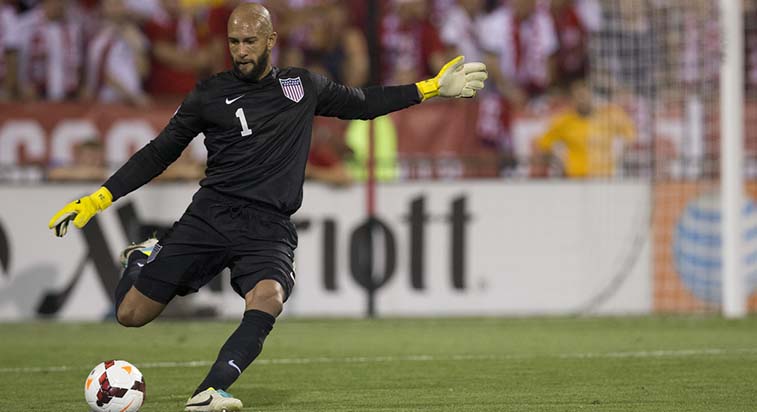
Another common question we get asked at Keeper Portal is “How Can I Improve my Goalkicks” or “How do I take a Goal kick?” it seems a lot of goalkeepers put on the gloves and figure they don’t need to learn how to kick a ball properly ever.
However, unfortunately for them and for everyone else who struggles with their kicking a goalkeepers distribution has become one of the most important parts of the professional game.
So if you can’t kick the ball very far or accurately from the floor then now is the time to change that!
1: Mentality
If you believe you will do a bad kick, you will do a bad kick. You need to visualise a clean contact and envisage the ball reaching a ‘believable’ distance for your age and ability. Don’t imagine kicking it as far as Hart or Buffon as you will only get disheartened. Halfway is a good start. If you’re a youngster, then reaching the nearest part of the centre circle is good.
Believe you can do it and block out the shouts from your teammates and coaches. Most of them probably couldn’t hit the ball consistently with the correct technique anyway, so don’t let them intimidate you. Outfield players have a common misconception that a goal kick is easy. Watch how much some of them struggle when taking long distance free kicks in their own half.
2: Ball placement.
Bad pitches are common, particularly at amateur level so you need to find the most level part of the six-yard box, even if it means kicking at a patch of ground or taking it from behind the line to make sure you have somewhere decent to place the ball (12 inches really isn’t going to affect the overall distance anyway!).
If you have a flat pitch then you are fine and you don’t even need to worry about divots. Remember, your plant foot needs somewhere nice and flat to grip too as it is just as important as the kicking foot.
3: Approach.
Don’t, whatever you do, have a massive run up. All you need to remember is that the most important step in the goal kick is the last one; it needs to be a decent stride to create good backswing. Watch how the pros do it, some only take one step when taking a free kick on the edge of their box. You don’t need to take a huge run up. All it will do is ruin your technique and you will slice the ball or hit over it.
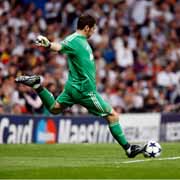 After placing the ball down, take one large stride ‘straight’ back. Mark that point either mentally or with a stud mark, then take a few smaller paces back. Don’t go off the pitch. Then take one large sidestep to the left or right, depending which foot you kick with. Some people prefer two to the side. You need to practice and judge which gives you the best approach and contact. Slowly, start your run-up, eyes on the ball. Don’t ever sprint. Do not look up. Approach your final step mark steadily, with your head dipped slightly (don’t worry the ball will still go high, another misconception that causes lack of power is to have the head back). Once you hit the final step mark take the longer lunge as smoothly as you can, aiming to have your plant foot land about a ball’s width to the side of the ball, not directly next to it.
After placing the ball down, take one large stride ‘straight’ back. Mark that point either mentally or with a stud mark, then take a few smaller paces back. Don’t go off the pitch. Then take one large sidestep to the left or right, depending which foot you kick with. Some people prefer two to the side. You need to practice and judge which gives you the best approach and contact. Slowly, start your run-up, eyes on the ball. Don’t ever sprint. Do not look up. Approach your final step mark steadily, with your head dipped slightly (don’t worry the ball will still go high, another misconception that causes lack of power is to have the head back). Once you hit the final step mark take the longer lunge as smoothly as you can, aiming to have your plant foot land about a ball’s width to the side of the ball, not directly next to it.
4: Plant foot and kicking foot.
Ok, so as you take your last step, you need to ensure the non-kicking foot plants about a ball’s width away from the ball and is either level with it or ‘slightly’ back, depending on the angle and slope of the pitch. Try and have your non-kicking foot’s toes facing where you want the ball to go when it’s planted. Your backswing will take care of itself due to the longer last step, so try not to think about this.
Now a very important point as you swing to kick is to lock the ankle of the kicking foot. It needs to be pretty flat, as if your toes are pointing to the ground. This is not easy so you need to practice. In reality, your foot will be very slightly angled, like a golfers iron, but mentally you need to imagine it flat or you won’t lock it. If you connect with the inner or outer part of your foot you will get no power and the ball will curl or slice off somewhere. You should be aiming (I’m right footed so reverse if you are left footed) ever so slightly to the left of the centre of the ball, just under the middle line if you imagine it cut in two from left to right like the equator of the Earth. People will tell you that you need to get under the ball so to hit it at its lowest point. In truth this is impossible if you want a good kick as if you hit under the ball you will scoop it, causing height but little power. What they actually mean is aim slightly under the centre point of the ball. If your angle of approach is right, along with correct locking of the ankle and follow-through, the ball will go high and long and fairly straight. Just look at all the long range shots that fly over the bar. It’s harder to keep the ball down than it is to sky it when you strike it right with the full swing of your hip.
5: Contact:
With the ankle locked and your eyes fixed very slightly to the left of the centre, aim to strike the ball with the large bones in your foot between your ankle and toes. I’d say the higher on the foot the better, as a lot of people hit the ball too low, which results in the toes making the contact rather than the large bones in the foot. This results in a loss of power and sore toes. It’s also a common cause of people trying to get under the ball and just toe-bunting it.
If you concentrate on getting the correct approach and contact, the swing will pull you into the correct follow through. Do not take your eyes off the ball until it is gone. You’d be amazed how often people look up at the point of contact. If you do this you won’t hit the ball right. Keep your eyes on the point of contact. Do not look up. David Seaman is a great example of this, he always kept his gaze down.
6: Follow through:
This will pretty much dictate itself if your technique for the kick is correct. The kicking leg naturally swings across the body and you should lean back slightly at the point of contact, but not too much. I’ve heard it said to keep your kicking foot low once the ball is hit. This is a very advanced technique. Paul Robinson and David James follow-through like this. I think if your contact is right it doesn’t really matter if your follow-through goes higher as the force of the contact will have already pinged the ball away from you.
What I will say is that you need to ensure you swing your kicking ‘hip’ through the kick. Instead of concentrating on putting your foot through it, concentrate on making the right contact with the foot and putting your hip’s weight through it. The power comes from the hip, not the foot. A lot of people don’t get distance as they flick at the ball from the knee down. In reality the swing comes from the hip, so you need to mentally follow through with the hip to ensure your full weight collides with the ball, concentrating on the power from the hip can add 20 yards extra once mastered.
7: PRACTICE!
Ok I know it says 6 steps but in reality none of the above matters if you do not go out and practice this technique over and over again, it will be hard and tedious at first, but eventually your brain will begin to understand the technique and you will kick it well without thinking.
The best way to practice the contact is not through hitting it as a real goal kick all the time, but by having someone pass the ball into you along the ground from about 30 yards away, take one touch to control and knock it out of your feet at an angle, then strike it with the second touch. You will naturally learn the angle and swing by doing this method, and judge the size of your comfortable final step. Once you’ve hit a couple of decent kicks, move to the six-yard line and do it with the dead ball, like in a game. Keep alternating these drills and your brain will absorb the technique until you can do it without thinking. It will take time to master though.
Remember, goal kicks are not as easy as everyone thinks but kicking off the ground can make or break a keeper in the modern game so it pays to get this part of your game nailed down!
If you have any tips you would like to share to our readers then please feel free to add a comment below!
Special thanks to Helix1x for this post.



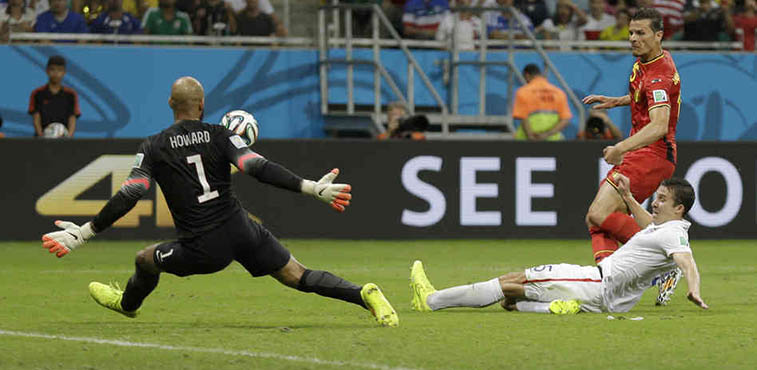
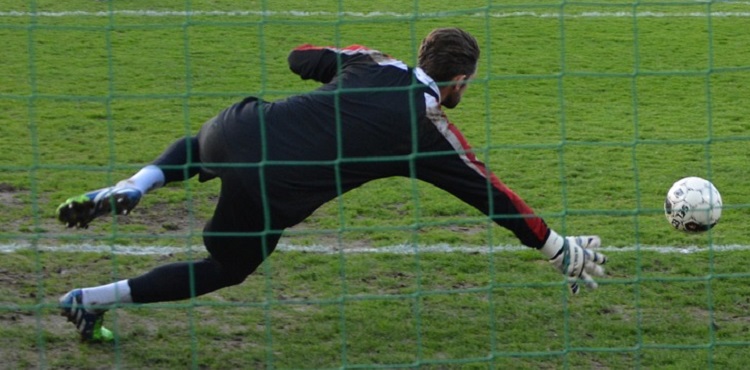
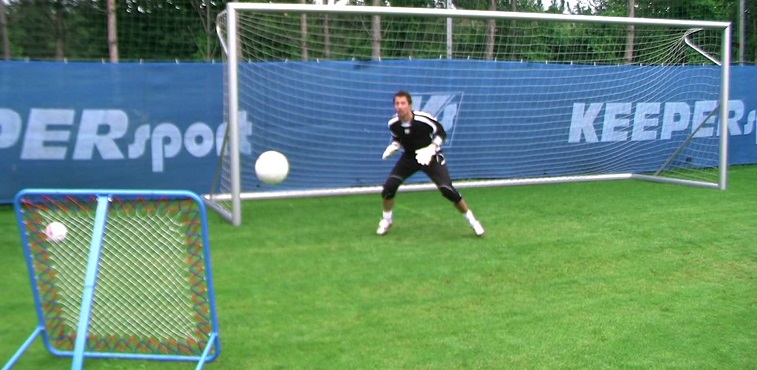
I am so glad that you included tip #7! Practice really is THAT important. I mean, when you think about it, all the technique learning & mastering in the world isn’t going to get you anywhere if you aren’t able to put it into practice on the playing field. Once you’ve mastered a move, your body will be able to respond and react almost automatically when the opportunity presents itself.